For many of the older generation, including your writer, it only seems like yesterday that the Docklands Light Railway (DLR) first opened, but in fact it was as long ago as 1987. In the intervening period, a lot has happened and in a recent talk given to the IRSE London & SE section, DLR was described as a ‘Trainset to Metro’. A number of challenges are emerging with the signalling and control systems, which were state of the art at the time but are now coming up for renewal.
As always with a busy metro railway, thousands of people are carried every day, so any disruption to travel is a major concern.
To understand the scale of the problem, one first needs to know the history of DLR and how it has expanded.
DLR history
In 1984, the old London docks were empty, with big plans afoot for a total regeneration of the area. To complement the building developments, a transport system would be needed, so the DLR was originally planned as a Y-shaped network with Tower Gateway in the west, Stratford in the north and southwards to Island Gardens on the north bank of the Thames.
By 1996, the Canary Wharf development was well advanced, massive new development schemes being projected beyond the original Docklands area. The DLR has had to keep pace with these.
In chronological order, the railway has grown as follows:
- In 1987, the Y-shaped route opened at a cost of £77 million with 13 route kilometres and 15 stations. Trains were a single articulated vehicle with a maximum speed of 80kph and able to negotiate a 40-metre radius curve. Signalling was a GEC fixed-block SSI-based system (solid-state interlocking) with automatic train operation (ATO) and a 10-minute frequency.
- In 1991, an extension to Bank station opened, costing £149 million with a 1.6km twin-bore tunnel branching off prior to Tower Gateway via a steep descending gradient. This gave much improved access to the City, although Tower Gateway was retained.
- In 1994, the extension from Poplar to Beckton was opened, costing £224 million and embracing 10 new stations with the route constructed mainly on viaducts. The original trains were replaced with ones capable of two-vehicle operation. This extension anticipated regeneration of the area, which is still ongoing.
- Also in 1994, the original signalling system was replaced with the Alcatel (now Thales) Seltrac moving-block system similar to that used on the Skytrain metro in Vancouver, using track loops for track-to-train transmission and a much-improved service frequency. Seltrac is a proprietary Communications Based Train Control (CBTC) system. Significant increases in ridership were the catalyst for all of this and the service pattern was changed to three basic routes – Bank to Island Gardens, Bank to Stratford and Tower Gateway to Beckton.
- In 1999, DLR was extended south of the Thames to Lewisham, from a relocated underground Island Gardens station through twin-bore tunnels and five new stations. The cost was £200 million, with finance raised via a PFI (private finance initiative) concession, which will cease in 2021 after which the line will be absorbed into the main DLR business structure.
- In 2005, a branch from Canning Town to King George V opened. It cost £140 million and had four intermediate stations, principally London City Airport. This, too, was financed differently but not in such a restrictive way as for Lewisham. A fourth operational route from Bank to King George V commenced.
- In 2009, the branch was extended from King George V to Woolwich Arsenal by another under-river crossing of 2.5km twin-bore tunnels and a 13.5 metre diameter intervention shaft .
- Finally, in 2011 and in anticipation of the London Olympics, a new link to Stratford International from Canning Town was created, using part of the former North London line to North Woolwich. This cost £150 million and included four new stations.
As a result of all of these additions, the current network is 40km in length with 45 stations.
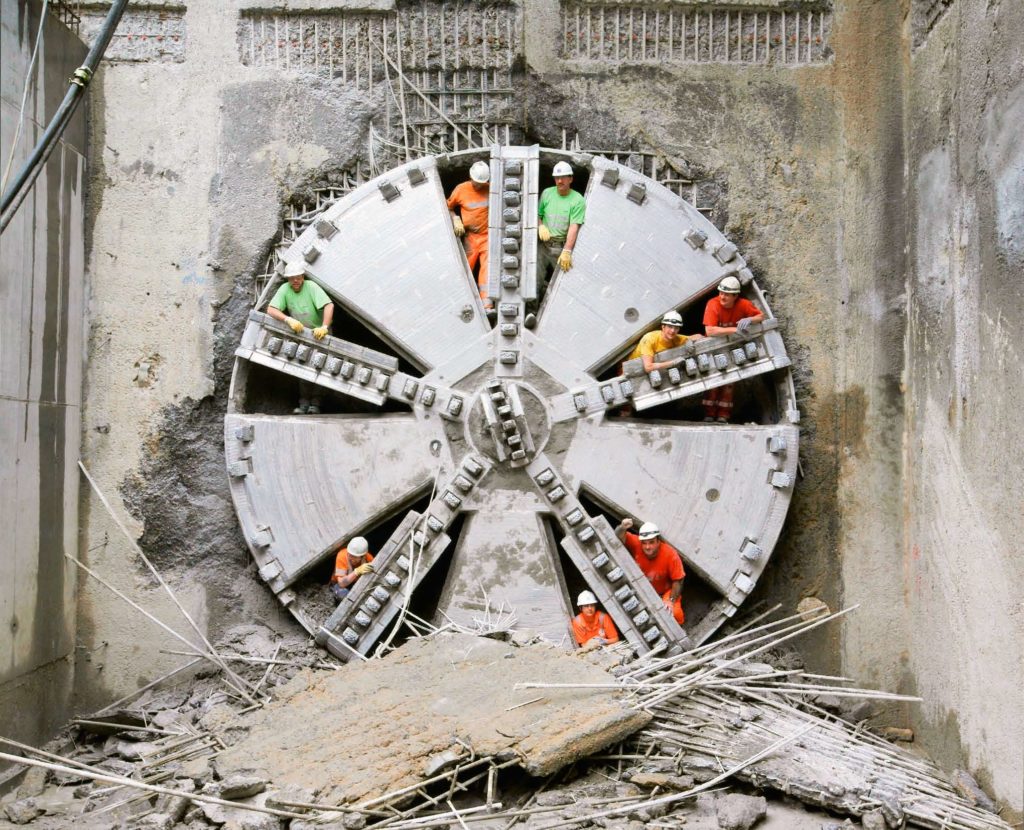

Other major enhancements
In addition to the line extensions, other major works had to be undertaken to cope with the growth in passenger numbers and new housing developments. A brand-new station at Langdon Park between Poplar and Stratford was constructed in a futuristic architectural style, with much use of curved glass.
The increase in ridership meant that two vehicle trains were often insufficient and a project was put in place to increase train length to three vehicles. This proved very complex as it meant lengthening platforms, many of which were already in cramped locations.
The two-track island platform arrangement at Tower Gateway was abandoned owing to space limitations, so the station has been rebuilt for just one track, with platforms either side (see right). This enables the segregation of incoming and outgoing passenger flows.
At South Quay, it was impractical to lengthen the existing two platforms, so the station was rebuilt on a totally different site nearby. With a busy operational railway, closing the railway to undertake the construction was impractical, so working every night was the only option.
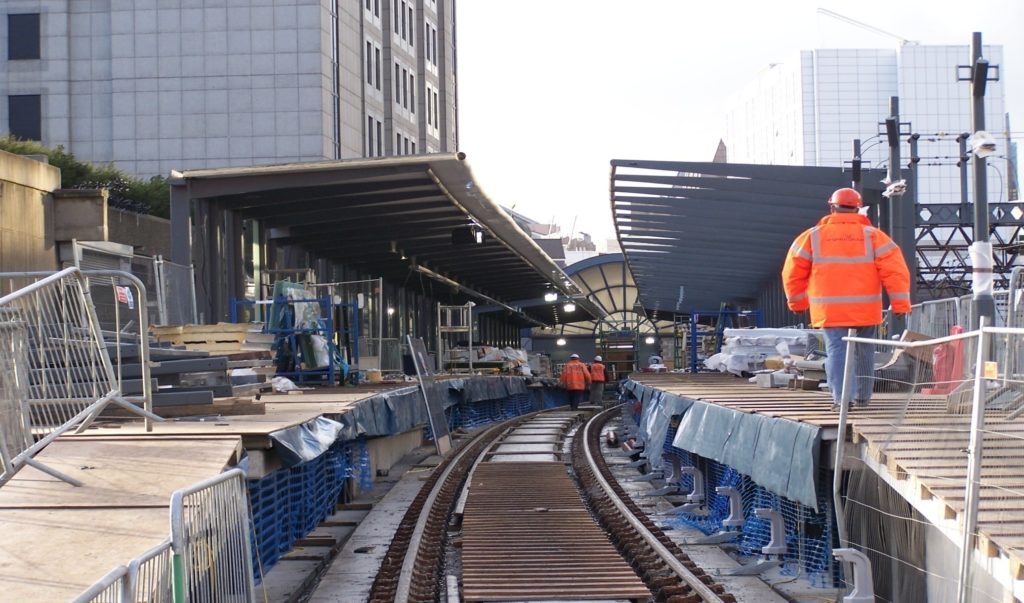
Platform extensions were also impossible at five other stations – Cutty Sark, Elverson Road, Pudding Mill Lane, Gallions Reach and Royal Albert – so selective door opening had to be introduced with the first and last set of doors on the three-vehicle train that are inhibited.
As well as platform lengthening, enhancements to both traction and low-voltage power supplies were needed, plus some additional lifts and expansion of the long-line public-address and CCTV networks. Additional trains were purchased from Bombardier in Germany, bringing the fleet total to 149 vehicles.
Flat junctions are always a source of delay when operating an intensive service and two such junctions existed on the DLR. The first, at Delta junction on the original part of the railway, where the lines from Bank, Poplar and Canary Wharf interconnect in a triangular formation, was the most critical. To obtain grade separation, the eastbound track from West Ferry to West India Quay had its viaduct repositioned, using both some of the original spans and some new ones as well, to dive under the West India Quay to Poplar track, thus avoiding conflicting movements. A small penalty was that west-to-south trains could no longer call at West India Quay – the track being at a different level – but, with Canary Wharf station only a short distance away, this was a small price to pay. The work was completed in August 2009.
At Canning Town, a similar situation had existed with the opening of the London City Airport line. A new flyover was installed to grade separate this junction.
Ageing railway
As has been described, DLR has grown piecemeal over the years and the original Seltrac equipment is now a 25-year-old design. As the later extensions have opened, different marques of equipment have been introduced, sometimes needing to alter the boundaries of the CBTC sections.
Seltrac works with four essential components:
- VCC (Vehicle Control Centre) and SMC (Schedule Management Centre) located at Beckton and Poplar control centres, which give out the train commands to the various subsystems;
- VOBCs (Vehicle On Board Controllers) that are fitted on every train;
- SCSs (Station Controller Systems) providing point and emergency stop button supervision;
- ACEs (Axle Counter Evaluators) and associated axle counters that provide deadlocking and a means to track non-communicating trains at specific places on the journey by providing a secondary train detection facility.
The communication between track and train is carried out by continuous inductive track loops (sometimes known as wiggly wire) that are laid between the running rails. If communication is lost between the control centre and the train, then the train stops before proceeding in restricted mode to the next loop section, with other trains in the vicinity being vitally protected.
The system is very reliable. The VCC at Beckton is relatively new, with sufficient capacity to handle any future extensions or remodelling projects. The SCSs are of different vintages and the interfaces between these and the ACEs have needed a new design to accommodate the incremental upgrade of the ACE equipment. Thales has worked hard to ensure the variations in the design of the equipment all work together successfully.
However, warnings have been given that ongoing support for the present arrangement will need re-thinking in about three years due to difficulties in the sourcing of old components.
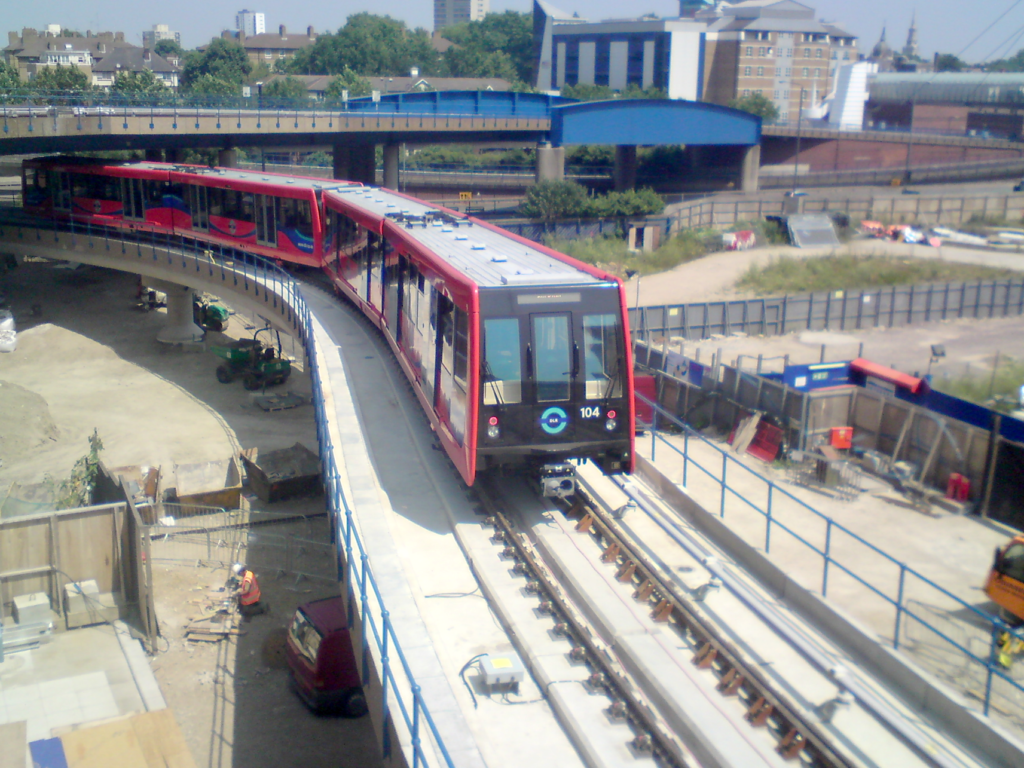
Options for upgrading
DLR management has worked out four likely options:
- Do nothing and trust that the existing system configuration will remain reliable and that in-house resources can fault-find and repair any failures that occur. This is rejected as unsustainable in the long term.
- Buy up the remaining stock of spares from Thales to ensure piece parts are available for a longer period of time. This eventually has the same unsustainability, but over a longer period of time, and is not supported by Thales as it weakens its ability to give third-level assistance when needed, both for DLR and other similar systems that still use this technology.
- Place an order for new equipment and spares to be manufactured whilst it is still possible to do so, such that a longer period of guaranteed service provision can be maintained. Again, Thales advises against this as it is perpetuating an obsolete system which will only delay an inevitable upgrade to a more modern design.
- Upgrade the system to the latest hardware, broadly to the design being rolled out by Thales on the London Underground sub-surface lines (the 4LM programme – four lines modernisation).
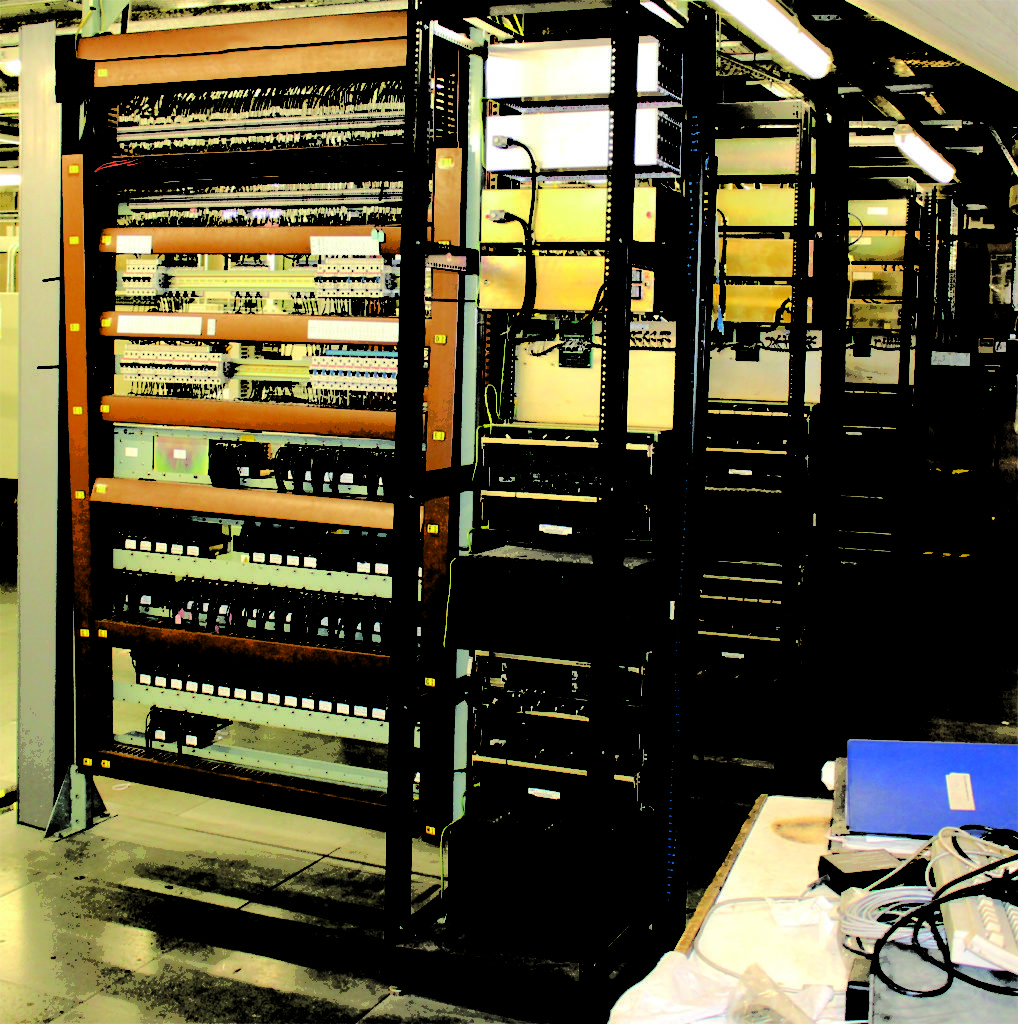
Whilst the third option is the most cost effective, it doesn’t have full support from Thales so it is doubtful as to whether this will overcome the obsolescence challenges. Backward compatibility with the remaining equipment might also be problematic.
Option four is effectively a re-signal of the wayside network and is obviously the most expensive, but there are other factors as well. The new equipment has two generation options – Third Generation, where racks have a bigger footprint than the existing and space constraints will be a problem in some equipment rooms, or Fourth Generation, which is currently not used anywhere but has a very distributed approach to the architecture of the design.
On the plus side, the present SCSs, which number 30, could be reduced to 17 but may require more fibre cable capacity, dependent upon cut-over strategy and the need to cater for the additional data. Also, if one SCS were to fail, it would mean losing a larger section of the railway.
Deliberations continue as to the way forward.
Future Expansion and Other Issues
New routes are always a possibility. One, to Dagenham Dock from a junction off the Beckton branch, has been under consideration for some time but is not likely to proceed in the short term. More likely are additional under-river crossings to either Catford and/or Thamesmead, both seen as growth areas.
Other system technologies will have to be modernised in time. The inductive track loops are no longer the preferred transmission system for new automated metros, radio now being the system of choice. However, on DLR, there is no plan to change to radio as the loops give reliable service. Any new signalling equipment will be bought with a future radio capability.
Similarly, the DLR radio network for communication to trains and staff has been upgraded in recent years, to improve coverage and reliability, but it remains an analogue system. Sooner or later, a change to digital technology will be required, but not yet.
DLR has a ‘can do’ ethos and there is no doubt it will arrive at workable solutions for all the challenges ahead.
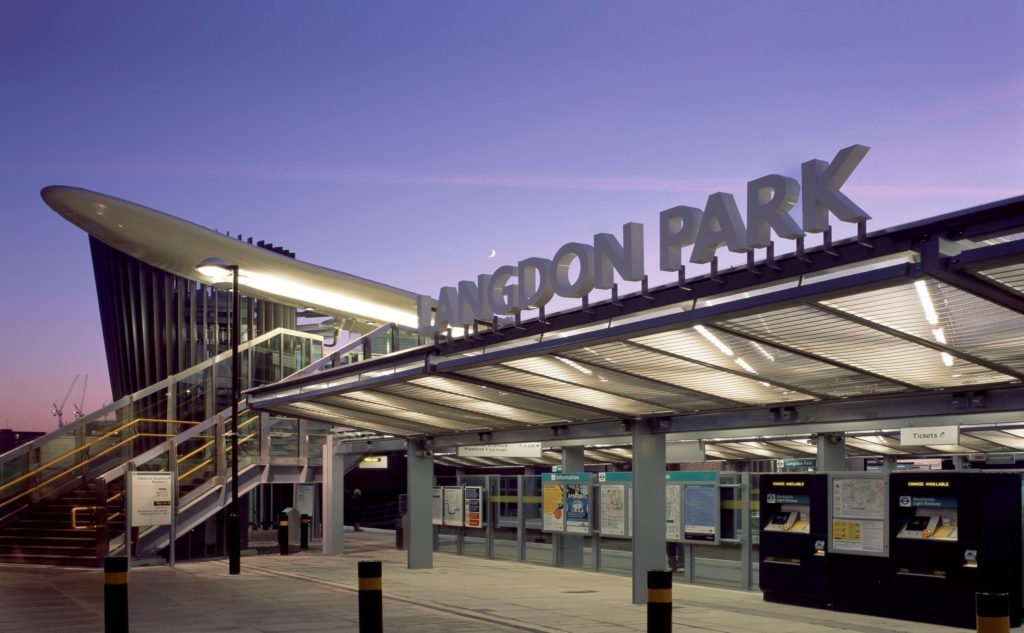
Thanks to Geoff Mitchell, who is head of engineering for London Rail, encompassing DLR, London Trams and London Overground, and who gave the presentation to the IRSE.

